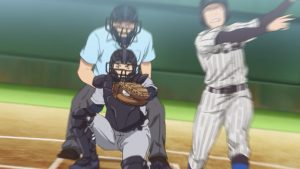 This was one of those weeks were Major proved it doesn’t have to rely on manufactured drama to tell a story. Everything that went down fell well within the bounds of normal adolescent nichijou, which certainly seems dramatic enough at the time even if not so much from a distance. As exceptional a talent – and personality – as Goro is, I always appreciated that Major was a very grounded sports series, not only in terms of baseball but life as well. Sure, it gets dramatic sometimes – so does life.
This was one of those weeks were Major proved it doesn’t have to rely on manufactured drama to tell a story. Everything that went down fell well within the bounds of normal adolescent nichijou, which certainly seems dramatic enough at the time even if not so much from a distance. As exceptional a talent – and personality – as Goro is, I always appreciated that Major was a very grounded sports series, not only in terms of baseball but life as well. Sure, it gets dramatic sometimes – so does life.
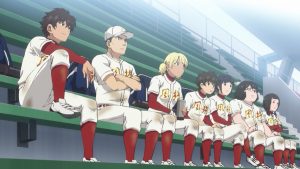 The prospect of facing off against a vastly superior opponent is a fairly daunting one for a kid – no one likes being embarrassed. Yayoi and Tao didn’t have any deep or sinister reasons for bailing on the team (and Daigo) – they just saw no merit in being reminder of what lay in store for them. I don’t think they handled it well or respectfully, but I get where they’re coming from. They also, frankly, have other interests in life besides baseball – something that seems to become more of an issue for girls as they advance through the grades than boys, dealing with the social pressures of being female athletes in a male-dominated sport like baseball.
The prospect of facing off against a vastly superior opponent is a fairly daunting one for a kid – no one likes being embarrassed. Yayoi and Tao didn’t have any deep or sinister reasons for bailing on the team (and Daigo) – they just saw no merit in being reminder of what lay in store for them. I don’t think they handled it well or respectfully, but I get where they’re coming from. They also, frankly, have other interests in life besides baseball – something that seems to become more of an issue for girls as they advance through the grades than boys, dealing with the social pressures of being female athletes in a male-dominated sport like baseball.
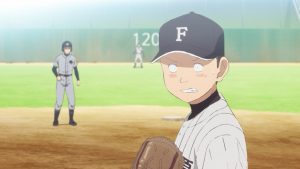 In pure practical terms, the preparation for tomorrow goes exactly as I suspected. There’s no way Sakura can start three days in a row – kids shouldn’t even start two, but this is the reality of youth baseball. Daigo does indeed plan to save Akira for a potential matchup against Eihou, planning to take his best shot against the stronger opponent no matter how terrible the odds are. And that means Chisato (I love how little Daigo is on a casual first-name basis with most of the girls, adorably feckless bozu that he is) gets the call for the winnable semi-final. Daigo asks her to return to school to show him what she has, and Sakura and Akira latch on for their own reasons. An exhausting captain, indeed…
In pure practical terms, the preparation for tomorrow goes exactly as I suspected. There’s no way Sakura can start three days in a row – kids shouldn’t even start two, but this is the reality of youth baseball. Daigo does indeed plan to save Akira for a potential matchup against Eihou, planning to take his best shot against the stronger opponent no matter how terrible the odds are. And that means Chisato (I love how little Daigo is on a casual first-name basis with most of the girls, adorably feckless bozu that he is) gets the call for the winnable semi-final. Daigo asks her to return to school to show him what she has, and Sakura and Akira latch on for their own reasons. An exhausting captain, indeed…
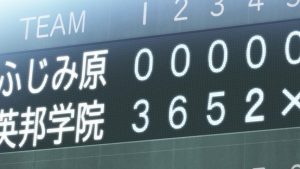 There’s a concern here with Nishina having his confidence shattered by being destroyed by a monster like Eihou, but I don’t know what the answer to that is – somebody has to pitch to them. As for Chisato she seems capable enough in a pinch – she even has a slider (breaking balls are not banned in little league). Sakura is a little bummed about this turn of events, partly because she doesn’t like giving up her place on the mound but for other reasons as well. She bails early, but soon enough the rain arrives and puts an end to the bullpen session anyway (before Akira gets a chance to throw).
There’s a concern here with Nishina having his confidence shattered by being destroyed by a monster like Eihou, but I don’t know what the answer to that is – somebody has to pitch to them. As for Chisato she seems capable enough in a pinch – she even has a slider (breaking balls are not banned in little league). Sakura is a little bummed about this turn of events, partly because she doesn’t like giving up her place on the mound but for other reasons as well. She bails early, but soon enough the rain arrives and puts an end to the bullpen session anyway (before Akira gets a chance to throw).
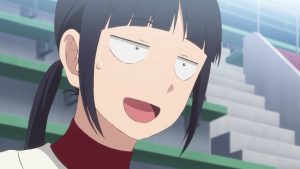 Akira bumps into his old teammates on the way home, and tries a little too hard to justify his place in the baseball world. Anita goes to the clinic and is told she has a sprain, which ideally she’d rest for a week but practically cannot. The also-rans on the team, Seira and Hiromu, fret about their lack of a contribution and dream of justifying their place on the team. And Sakura runs into Izumi, who gives her an umbrella and some dubious advice. I could do without Izumi constantly bad-mouthing Daigo, especially behind his back, but it’s not going to make any impact on Sakura – her die has been cast
Akira bumps into his old teammates on the way home, and tries a little too hard to justify his place in the baseball world. Anita goes to the clinic and is told she has a sprain, which ideally she’d rest for a week but practically cannot. The also-rans on the team, Seira and Hiromu, fret about their lack of a contribution and dream of justifying their place on the team. And Sakura runs into Izumi, who gives her an umbrella and some dubious advice. I could do without Izumi constantly bad-mouthing Daigo, especially behind his back, but it’s not going to make any impact on Sakura – her die has been cast
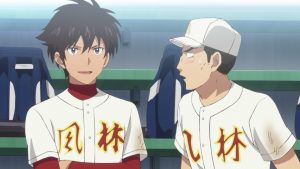 The matter of romantic affections complicating things for a co-ed middle school team is nothing to be sneezed at, but the more immediate concern is the weather. Independently Anita and Daigo come to the same realization – Fuurin would be better off if the games were rained out since that would give Anita a chance to heal and Sakura a chance to rest. But I’m anxious to see Chisato pitch, actually, so I kind of hope they play. I’m also curious to know why our old friend Mayumura Michiru popped up at the end – she doesn’t seem to be on Eihou’s team (Daigo would surely have noticed), though I suppose she could have been getting a rest against an overmatched opponent. But wouldn’t uber-prepared Captain Daigo have known about her being a member?
The matter of romantic affections complicating things for a co-ed middle school team is nothing to be sneezed at, but the more immediate concern is the weather. Independently Anita and Daigo come to the same realization – Fuurin would be better off if the games were rained out since that would give Anita a chance to heal and Sakura a chance to rest. But I’m anxious to see Chisato pitch, actually, so I kind of hope they play. I’m also curious to know why our old friend Mayumura Michiru popped up at the end – she doesn’t seem to be on Eihou’s team (Daigo would surely have noticed), though I suppose she could have been getting a rest against an overmatched opponent. But wouldn’t uber-prepared Captain Daigo have known about her being a member?


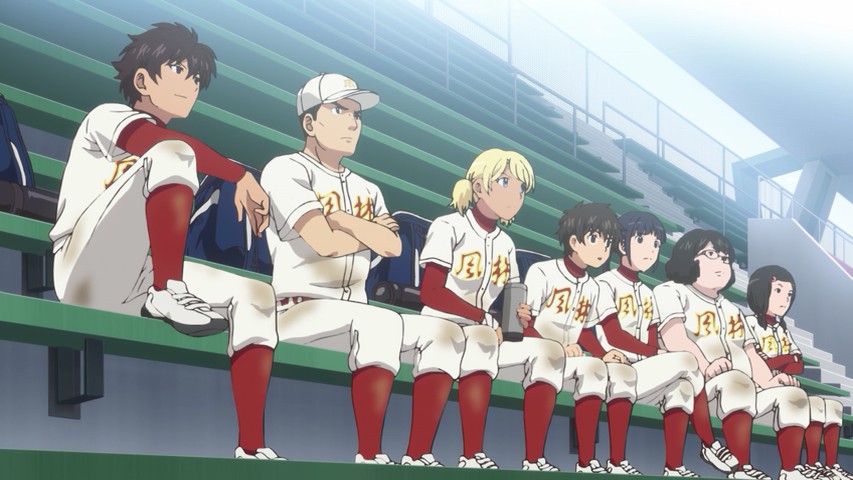
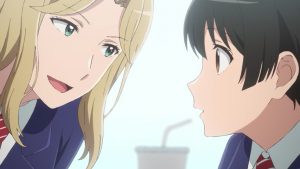
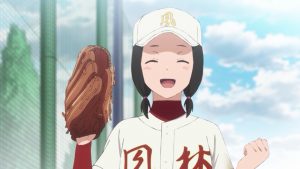
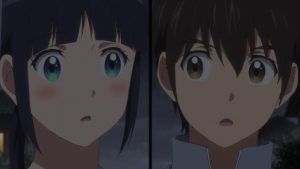
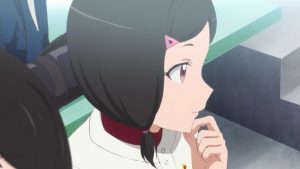
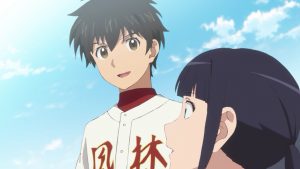

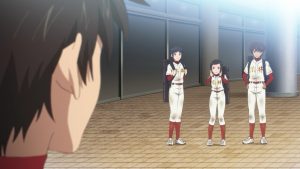
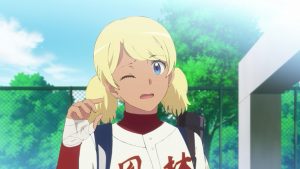
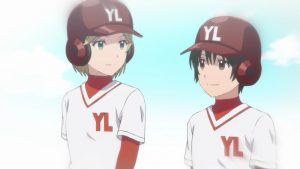
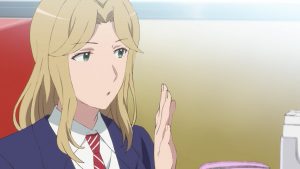
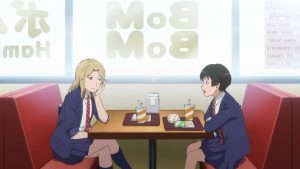
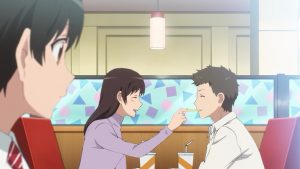
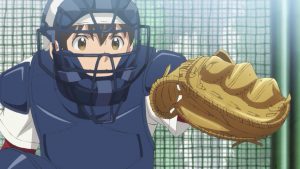
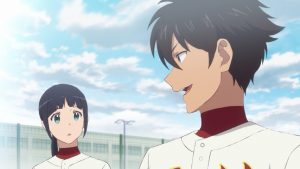
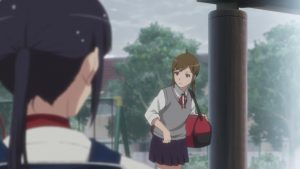
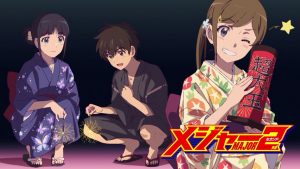
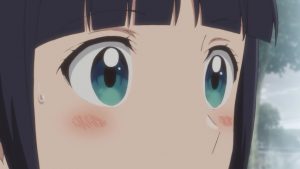
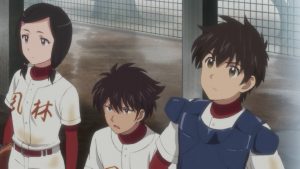
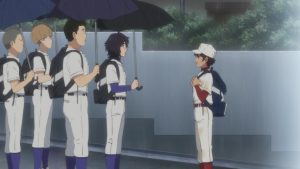
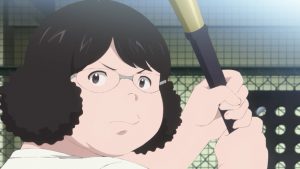
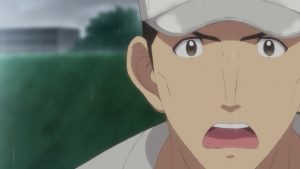
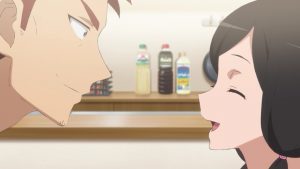
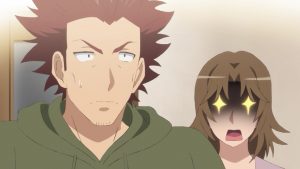
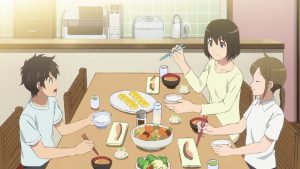
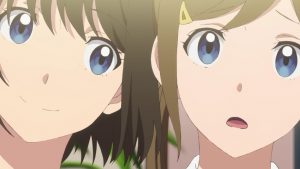
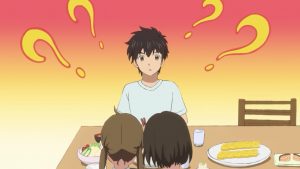
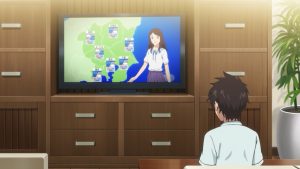
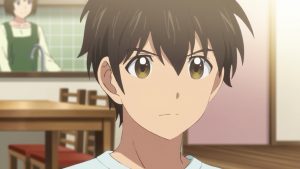
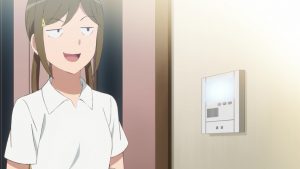
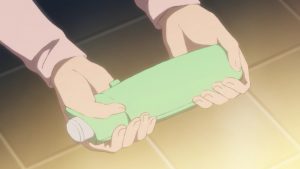
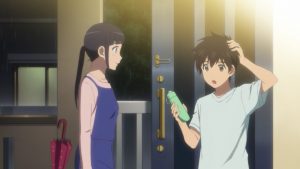
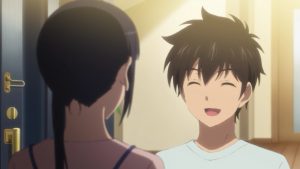
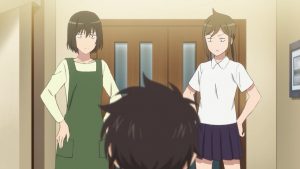

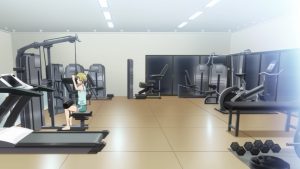
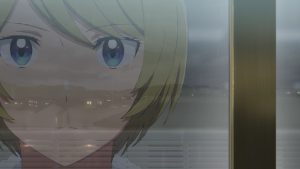
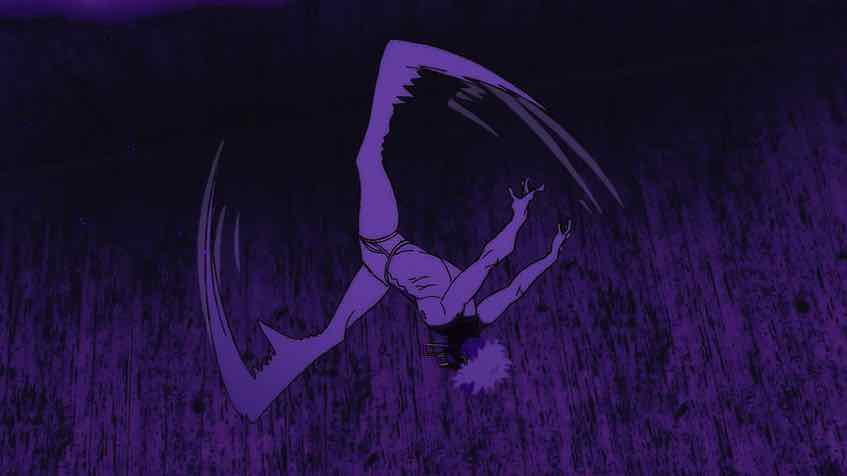
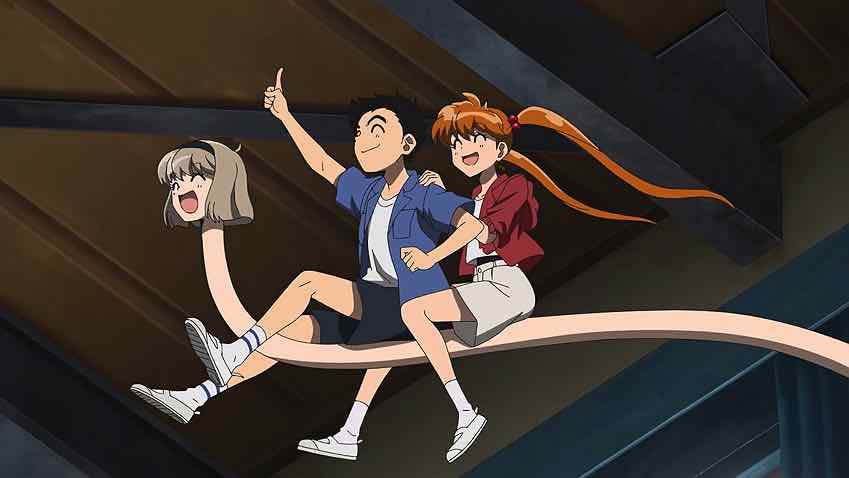
Red
August 9, 2020 at 6:42 amWhy do they ban using breaking balls in grade school or in tandem with rubber balls?
Guardian Enzo
August 9, 2020 at 9:36 amBreaking balls are much harder on the elbow than fastballs, and a lot of doctors believe kids shouldn’t be allowed to throw them at all before high school.
CoffeeMilk
August 15, 2020 at 3:06 amThrowing breaking balls aren’t harder on the elbow than fastballs. No studies have found increased force or torque about the elbow or shoulder when throwing a curveball versus a fastball. And overall, no biomechanical or epidemiological studies have found an increased risk of injury for curveballs when compared with the fastball. (This link is a review from 2015 on the available data: https://www.ncbi.nlm.nih.gov/pmc/articles/PMC4272688/). What studies have shown is that pitchers of all ages who throw harder are more at risk for injury.
Among young pitchers, there is an increased risk of shoulder pain among curveball users and a significantly increased risk of elbow pain among slider users. The younger a kid is, the less physical control they have, the less their muscles and bones have developed, and the more likely that they will not have good mechanical form when trying to throw breaking pitches, which can put more stress on the arm. So regardless of whether the pitches put more stress on the elbow or shoulder, there are good reasons to avoid having kids throw breaking pitches until they are older.
Guardian Enzo
August 15, 2020 at 8:47 amThat’s not the prevailing opinion.
https://www.momsteam.com/overuse-blamed-for-youth-pitching-injuries-but-sliders-and-curveballs-still+risk
https://www.drivelinebaseball.com/2017/02/fastballs-offspeed-pitches-comparative-relative-elbow-stress/
There’s some mixed data on whether sliders and curves directly lead to elbow injury in large numbers, or whether it’s an indirect result of general fatigue and pain causing mechanical breakdowns which result in injury. I’m not sure it matters very much TBH, but the consensus of opinion is that breaking pitches do result in increased injury risk for youth pitchers – they just aren’t the #1 risk factor for direct injury (which is overwork and too much travel baseball).
CoffeeMilk
August 16, 2020 at 2:04 amThe weight of scientific evidence is against the prevailing opinion. And as much as I like the Driveline folks, normalizing stress by velocity is meaningless when you have direct measurements of the stress itself. The stress on the elbow is less with breaking pitches, but that doesn’t mean they can’t cause injury. It just means that how they cause injury isn’t because they are more stressful on the elbow.
Throwing harder (100% instead of 80-90%) and fatigue are the greatest risks to injury. Pitchers who pitch too much are the ones who get hurt, whether they throw a curveball or not. Which I hope won’t happen to Sakura.
Proto
August 11, 2020 at 8:14 amAnd so the plot thickens. For all its faults one thing I liked about Ace of the Diamond is that it spent quite a bit of time building up the competition and giving them faces and motivations. We got a bit of that with Andy and Urabe, but overall I do find that Major does not spend enough time on the rivals as other baseball series. Which is a fair choice, but it makes me hope we either get some known faces in the future 2 games or we get a new recurrent rival.
Guardian Enzo
August 11, 2020 at 8:41 amThat can be done to excess, IMO. DnA, Haikyuu and Oofuri are all sometimes guilty of it.
I find Mitsuda strikes a pretty good balance on that front for my tastes. Once or twice in every age bracket he’ll give an opponent major focus, like Yokohama Little in the first series. But I’m more interested in spending time with the protags if they’re interesting characters. I suspect whatever team Hikaru plays for will get some love, and who’s to say what Michiru’s return to the scene might portent.